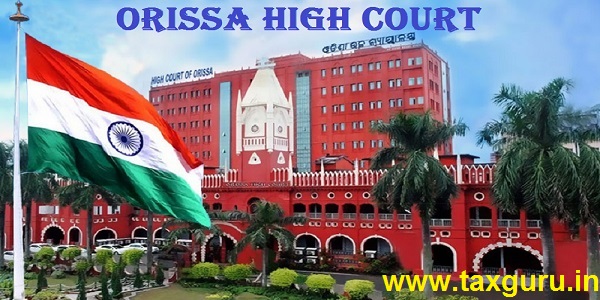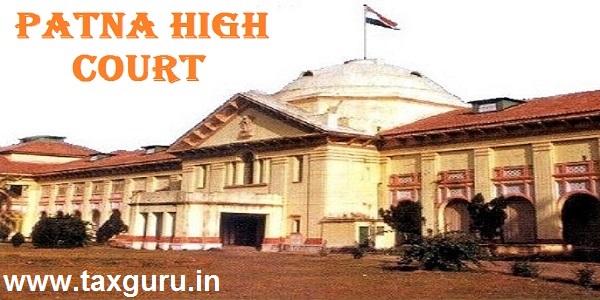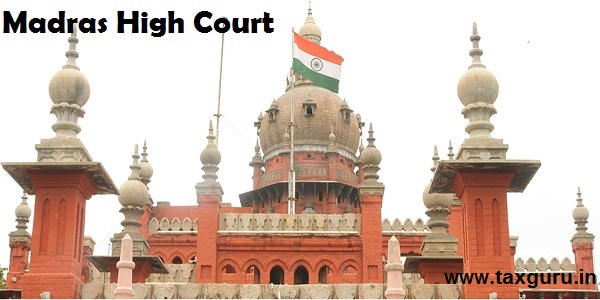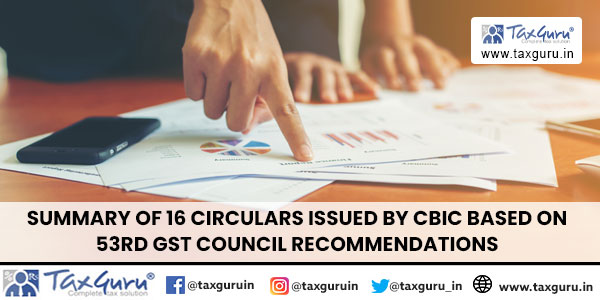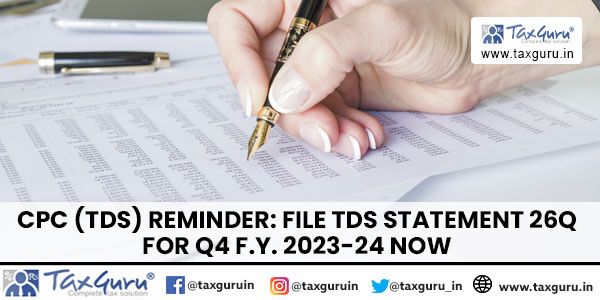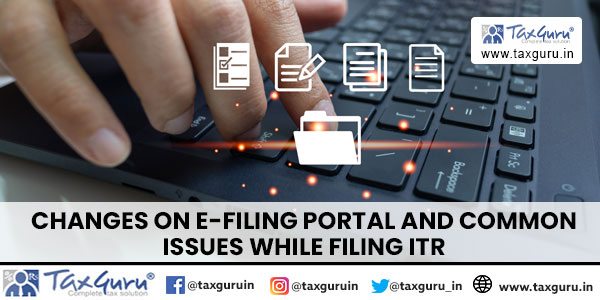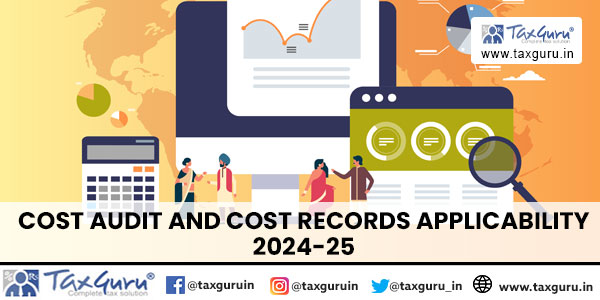Case Law Details
Baldevji Motiji Thakore Vs ITO (ITAT Ahmedabad)
ITAT Ahmedabad held that when genuineness of the transaction is proved and more than 99% of the payment was received by cheque, capital gain on sale of property should be computed by applying amended proviso to section 50C of the Income Tax Act.
Facts-
The assessee along with other eight co-owners entered into a sale agreement (banakhat) on 31.12.2010 for a consideration of Rs.1,70,64,489/-. It was specifically agreed between the parties that the seller should not insist for executing the registered sale deed at the increased/decreased Government jantri price at the time of execution of the sale deed.
The assessee filed ROI on 14.3.2015 declaring total income at Rs.1,96,830/-. The assessee claimed his share of income on sale of the property at Rs.18,96,054/-. After claiming indexed cost, improvement cost, the assessee has claimed LTCG at Rs.NIL and also claimed exemption under section 54F of the Act. The AO reopened assessment on the ground that 50C valuation of the above property was Rs.44,51,333/- i.e. (Rs.4,00,62,000/9) and not Rs.18,96,054/-as declared by the assessee. Since the new jantri price of the Govt. of Gujarat for the above piece of land was Rs.16,500/- per sq.meter and thus market value of the property as per the valuation authority was of Rs.4,00,62,000/-.
In the reassessment proceedings the assessee has not cooperated, therefore, the AO was compelled to finalise the assessment under section 144 of the Act and made addition of Rs.25,55,279/- being the difference of Rs.18,96,054/- declared by the assessee and sale consideration under section 50C taken by the AO at Rs.44,51,333/- being the valuation made by valuation authority. The AO has also disallowed claim of deduction under section 54F of the Act at Rs.6,60,282/- and improvement cost of Rs.4,04,002/- and demanded tax thereon. The ld.AO also initiated penalty proceedings under section 271(1)(c) of the Act. Aggrieved against order of the AO, the assessee filed appeal before the ld.CIT(A).
CIT(A) rejected the appeal of the assessee. Being aggrieved, the assessee has preferred the present appeal.
Conclusion-
The bonafideness of the transaction is to be seen in the assessees case. The assessees entered into the Agreement of Sale on 31/12/2010 and received Rs. 16.34 lacs by two cheques in March 2011 and balance amount of Rs. 2.50 lacs on 21/09/2011, thus the entire sale consideration was received 14 months before execution of the Sale Deed. It is further seen more than 99% of the payment was received by cheque mode by the assessees. Thus the genuineness of the transaction namely the sale consideration as per the date Agreement of Sale namely Rs. 7,000/- are substantially paid to the sellers. However when the same piece and nature of land when registered as Sale Deed, 22 months thereafter then prevailing Jantri value of Rs. 16,500/- cannot be applied in this case. Taking overall circumstances of the case, in our considered opinion, it is a fit case to set aside the matter back to the file of the AO with direction to compute capital gain on sale of the property by applying amended proviso to section 50C of the Act and recompute the capital gain.
FULL TEXT OF THE ORDER OF ITAT AHMEDABAD
This bunch of five appeals are filed by the different assessees (but co-owners of a piece of land and dispute on the capital gain) against respective orders of even dated 18.1.2019 passed by the Commissioner of Income-tax (Appeals)-3, Ahmedabad relating to the Asst.Year 2012-13. Since common issues are raised in all these appeals and the grounds are identical worded except quantum, we dispose of all these appeals by this common order.
2. For adjudication of all these appeals, we take facts and figures from ITA No.490/Ahd/2019 in the case of Baldevji Motiji Thakore, as a lead case. In this appeal, the grounds raised by the assessee are as follows:
“1. The ld.CIT(A) erred in law and on facts in confirming the addition of Rs.25,55,279/- of the I.T.Act 61 without appreciating the law and facts of the case properly.
2. The ld.CIT(A) erred in law and on facts in denying the cost of improvement of Rs.4,04,002/- while computing the capital gain on sale of impugned land without appreciating the law and facts of the case in proper perspective.”
3. A reading of the above grounds, we find the issue involved in this appeal is sale of immovable property belonged to nine co-owners and capital gain arising thereon and application of provisions of section 50C and 54F of the Income Tax Act, 1961 (“the Act” for short) and also denial of cost of improvement as claimed by the assessee in all these appeals.
4. Brief facts of the case are that the assessee along with other eight co-owners entered into an sale agreement (banakhat) on 31.12.2010 for a consideration of Rs.1,70,64,489/- which was based on the prevailing stamp duty value of Rs.7000/- per sq.meter at the relevant time i.e. on the date of entering into agreement for sale. An amount of Rs.1,02,000/- was received as a token advance by the co-owners by way of cash on entering into the agreement, out of which the assessee share was at Rs.11,334/- being 1/9th of the total token amount. This agreement was valid for three years i.e. from 31.12.2010 to 1.1.2013. The buyer has agreed to purchase the piece of land for a consideration of Rs.1.70 crores (at the rate of Rs.7,000/- per sq.meter being Government jantri price of the land). It was specifically agreed between the parties that the seller should not insist for executing the registered sale deed at the increased/decreased Government jantri price at the time of execution of the sale deed. The assessee along with other eight co-owners executed the sale deed on 30.11.2012 and registered the same as document no.7111 of 2012 in Book No.1 at the office of Sub-Registrar, Ahmedabad-4, Paldi. It is seen from the sale deed that the assessee and co-owners received token advance of Rs.11,334/- = (Rs.1,02,000/9 ) by way of cash; Rs.9,01,388/- by way of cheque dated 22.3.2011 and Rs.7,33,333/- by cheque dated 26.3.2011 and Rs. 2,50,000/- by cheque dated 21.09.2011 drawn on Bank of India, Anand Nagar Branch. Thus, the assessee received a sum of Rs.18,96,054/- as his 1/9th share in the total consideration of the property at Rs.1,70,64,489/-.
4.1. For the Asst.Year 2013-14, the assessee filed return of income on 14.3.2015 declaring total income at Rs.1,96,830/-. The assessee claimed his share of income on sale of the property at Rs.18,96,054/-. After claiming indexed cost, improvement cost, the assessee has claimed long term capital gain at Rs.NIL and also claimed exemption under section 54F of the Act. The AO reopened assessment on the ground that 50C valuation of the above property was Rs.44,51,333/- i.e. (Rs.4,00,62,000/9) and not Rs.18,96,054/-as declared by the assessee. Since the new jantri price of the Govt. of Gujarat for the above piece of land was Rs.16,500/- per sq.meter and thus market value of the property as per the valuation authority was of Rs.4,00,62,000/-.
4.2. In the reassessment proceedings the assessee has not cooperated, therefore, the AO was compelled to finalise the assessment under section 144 of the Act and made addition of Rs.25,55,279/- being the difference of Rs.18,96,054/- declared by the assessee and sale consideration under section 50C taken by the AO at Rs.44,51,333/- being the valuation made by valuation authority. The AO has also disallowed claim of deduction under section 54F of the Act at Rs.6,60,282/- and improvement cost of Rs.4,04,002/- and demanded tax thereon. The ld.AO also initiated penalty proceedings under section 271(1)(c) of the Act. Aggrieved against order of the AO, the assessee filed appeal before the ld.CIT(A).
5. Before the ld.CIT(A), the ld.counsel for the assessee submitted that the assessee along with other eight co-owners sold a land situated at survey no.653/a situated at Village Makarba, Tal, Ahmedabad for a total consideration of Rs.1,70,64,489/- to Shri Jagdish L. Acharya by executing Deed of conveyance, which was registered with sub-Registrar, Ahmedabad, Paldi on 31.12.2010 for a consideration of Rs.1.70 crores as agreed by both the parties. They received a token advance of Rs.1,02,000/-, and as per the sale agreement the purchaser had to make balance payment of sale consideration between 31.12.2010 to 1.1.2013, and as per the condition stipulated in the agreement, the sellers i.e. assessee and the eight co-owners were under obligation and mandated to execute the sale deed at a price of Rs.1,70,74,489/- i.e. at the prevailing Government jantri rate of Rs.7000/- per sq.meter Therefore, as per the agreement the seller was under obligation to sell the property at the fixed rate of jantri and no variation in the agreed consideration, provided that the buyer was under obligation to make payment within the schedule agreed upon. Since the buyer had performed his obligation of the payment of sale consideration, the assessee and the co-owners being seller of the property entered the agreement on 31.12.2010. It was further submitted before the ld.CIT(A) that since the assessee had the legal obligation to sell the land in question at the rate of jantri of Rs.7000/- per sq.meter, which was prevailing at the time of execution of agreement, he cannot substitute the sale price with the later jantri rate on the date of execution of sale deed i.e. on 30.11.2012, and in other words, the assessee cannot recover a single extra money from the purchaser over and above what is agreed upon in terms of the agreement, and therefore, there was no question of invoking provision of section 50C of the Act. In fact the sale value was determined on the basis of jantri rate of Rs.7000/-per sq.meter prevailing at the time of execution of agreement to sell on 31.12.2010, therefore also there is no violation of provision of section 50C. To support the same, the assessee relied upon the decision of Vishakpatnam Bench of the ITAT in the case of M/s. Lahiri Promoters Vs. ACIT, in ITA No.12/Viz/2009. Before the ld.CIT(A) the assessee has filed certain additional evidences which were not filed before the AO and requested for admission of the same under Rule 46A of the IT Rules. The ld.CIT(A) has rejected the appeal of the assessee by a detailed order and relevant paras of the impugned order are reproduced as below:
“2.8.1. Applicability of stamp duty value concept while selling agriculture land not covered by the definition of section 2(14)(iiii) of the Act under section 50C:
The capital gain tax will arise on sale of agriculture land situated in Rural Area as per the definition of section 2(14) (Hi) of the Act as discussed herein above. However, if the agriculture land is not covered by the definition of section 2(14)(iiii) of the Act then sale of such agriculture land will be liable for capital Gain tax and accordingly provisions of section 50C of the Act will be applicable. The capital gain tax on sale of land in view of provisions of section 50C can be computed considering following aspects:-
> If sale consideration received by assesses is less than stamp duty value, stamp duty value shall be considered as sale consideration.
> Ifassessee claims that stamp duty value is exceeding fair market value and that value is not disputed before stamp authority, assessing officer refers the case to valuation officer.
> Valuation officer determines the value, if it exceeds stamp duty value, that value shall be ignored. If that value is less than stamp duty value, this value should be used as fair market value.
> This provision will be applicable when agriculture land is held as investment and transferred by assessee.
> Transfer of immovable property is effected on the date of execution of Agreement to sell and hence, Jantri value should be considered on that date and not on the date of execution of sale deed:
The provisions of section 50C as amended by Finance Act, 2016 are as under:
“Special provision for full value of consideration in certain cases:
50C.(1) Where the consideration received or accruing as a result of the transfer by an assessee of a capital asset, being land or building or both, is less than the value adopted or assessed or assessable by any authority of a State Government (hereafter in this section referred to as the “stamp valuation authority”) for the purpose of payment of stamp duty in respect of such transfer, the value so adopted or assessed or assessable shall, for the purposes of section 48, be deemed to be the full value of the consideration received or accruing as a result of such transfer.
Following provisos shall be inserted to sub-section (1) of section 50C by the Finance Act, 2016, w.e.f. 1-4-2017:
Provided that where the date of the agreement fixing the amount of consideration and the date of registration for the transfer of the capital asset are not the same, the value adopted or assessed or assessable by the stamp valuation authority on the date of agreement may be taken for the purposes of computing full value of consideration for such transfer:
Provided further that the first proviso shall apply only in a case where the amount of consideration, or a part thereof, has been received by way of an account payee cheque or account payee bank draft or by use of electronic clearing system through a bank account, on or before the date of the agreement for transfer.
For incorporating the above provisions the following rationale has been given in the memorandum explaining the Finance Bill 2016 on page 29 and 30: –
“Under the existing provisions contained in Section 50C, in case of transfer of a capital asset being land or building on both, the value adopted or assessed by the stamp valuation authority for the purpose of payment of stamp duty shall be taken as the full value of consideration for the purposes of computation of capital gains. The Income Tax Simplification Committee (Easwar Committee) has in its first report, pointed out that this provision does not provide any relief where the seller has entered into an agreement to sell the property much before the actual date of transfer of the immovable property and the sale consideration is fixed in such agreement, whereas similar provision exists in section 43CA of the Act i.e. when an immovable property is sold as a stock-in-trade. It is proposed to amend the provisions of section 50C so as to provide that where the date of the agreement fixing the amount of consideration for the transfer of immovable property and the date of registration are not the same, the stamp duty value on the date of the agreement may be taken for the purposes of computing the full value of consideration. It is further proposed to provide that this provision shall apply only in a case where the amount of consideration referred to therein, or a part thereof, has been paid by way of an account payee cheque or account payee bank draft or use of electronic clearing system through a bank account, on or before the date of the agreement for the transfer of such immovable property.”
2.8.2. It is seen from the facts that the deed for sale entered into by assesses vide Registration No. 7111 on 01.12.2012 at Sub Registrar-4 Paldi Office that sale consideration of the said immovable property was at Rs. 1,70,64,4897- and the assessee has shown his 1/9th share whereas the Sub-Registrar has valued (Jantri rate) the said property is at as 4,00,62,000/- for the purpose of payment of stamp duty for registration of said transaction and the buyer has paid stamp duty of Rs. 19,63, 100/-. Share of the assessee in such non-agricultural land @1/9th is calculated at Rs.4,00,62,000/9 = Rs.44,51,333/-. On the basis of this calculation, sale consideration u/s.50C of the Income tax Act,1961 is to be taken at Rs.44,51,333/- whereas the assessee offered sale consideration of Rs.18,96,055/-. In the case of the appellant, agreement to sell (Banakhat) on 31-12-2010 with the purchaser for the sale of the above mentioned land is at a price of Rs.1,70,64,489/- which was ultimately sold to the said purchaser on the consideration of Rs.1.70 crore as agreed between the purchaser and the appellant in the above mentioned agreement to sale. It can be seen that appellant along with 8 other co-owners have received the token amount of Rs.1,02,000/- from the purchaser on the date of executing the sale agreement. It is to be seen that on page no. 4 and 5 of the agreement, the part payment has been received in CASH which is totally against the tenets of the provisions of section 50C of the Act which has been amended where it is prerequisite to pay part payment in cheque or account payee bank draft or by use of electronic clearing system through a bank account, on or before the date of the agreement for transfer(as has been discussed in forgoing Para). The appellant has received the payment in cash which is not negated by the appellant at the time of appellate proceedings. In view of the above, the sale consideration has to be taken as on 01.12.2012 which is a total of Rs.4,00,62,000/- and not of 31-12-2010 which is at Rs.1,70,64,489/-. The capital gain which is to be calculated on the sale consideration, has to be taken as on 01.12.2012 which is a total of Rs. 4,00,62,000/-. This is also important to note that the provisions of section 50C as amended by Finance Act, 2016 to consider Jantri Rates on the date of Agreement to sale and not the date of sale deed has to be given retrospective effect in view of following Judicial Pronouncements:
(i) Hon’ble Ahmedabad ITAT in case of Dharamshibhai Sonani in ITA No. 1237/Ahd/2013 dated 30tn September, 2016:
(ii) Decision of Vizag Tribunal in case of Chalasani Naga Ratna Kumari vs. ITO vide ITA No: 639/Vizag/2013 dated 23/12/2016 wherein it was held that the proviso to section 50C, though inserted by the Finance Act 2016 w.e.f. 01.04.2017, has to be given retrospective effect from 01.04.2003 as it is intended to remove an undue hardship and is curative in nature
Keeping in view of the facts of the case and above discussion, I do not want to interfere with the action of the assessing officer where he has added Rs. 25,55,2797-u/s.SOC of the I.T. Act, 1961 for the year under consideration on the sale of the said plot. The addition made by the assessing officer is confirmed. The ground of the appellant is dismissed.”
6. Aggrieved against the order of the ld.CIT(A), the assessee is now before the Tribunal. The ld.counsel, Mr. Manish J Shah for the assessee submitted that the lower authorities have erred in invoking section 50C of the Act while the agreement to sell dated 31.12.2010 clearly indicated that total sale value of the property will be Rs.1.70 crores based on the prevailing jantri rate at Rs.7,000/- per sq.meter, and the same were being received by the assessee in three instalments, and the AO was not correct in adopting new jantri rate of Rs.16,500/- per sq.meter and thereafter arriving at sale value of the property at Rs.4,00,62,000/-. The ld.AR further submitted that initial token advance of Rs.11,334/- was only paid by cash, and the remaining payments were received by the assessee through cheques. Thus, the CIT(A) was not correct in holding that the amended proviso to section 50C would not be applicable to the assessee as the cash payment has been made. In support of his submissions, the ld.AR relied upon Co-ordinate Bench’s decision in the case of DCIT Vs. Shri Shantilal Prabhudas Patel in ITA No.267/Ahd/2018; decision of the ITAT, Visakhapatnam Bench in the case of Lahiri Promoters Vs. ACIT, in ITA No.12/Vizag/2009 dated 22.6.2010 and another decision of the same Bench in the case of Moole Rami Reddy Vs. ITO, in ITA No.311/Vizag/2010 dated 10.12.2010. The ld.counsel for the assessee has filed some supporting evidences for claiming exemption under section 54F of the Act and the expenditure incurred for the construction of new house in the Paper Book from page no.61 to 110. Affidavit of the contractor in support of the claim of land improvement expenditure from page nos.111 to 113 of the Paper Book was filed by the assessee. Thus, the ld.AR pleaded that the claim of the assessee is to be allowed.
7. Per contra, the ld.DR appearing for the Revenue strongly supported orders of the lower authorities and pleaded that the findings of the lower authorities do not require any interference. He further submitted that amendment in section 50C will not be applicable to the assessee as part of the consideration was received by the assessee in “cash” and therefore pleaded to sustain the orders passed by the Lower Authorities.
8. We have given our thoughtful consideration; perused material available on records including the Paper Book filed by the assessee. It is an admitted fact that on entering into an Agreement of Sale on 31.12.2010 the assessee and other co-owners; each received a sum of Rs.11,334/- (Rs.1,02,000/- in all) by way of cash as token advance amount. Clause-1 of the terms and conditions of the sale agreement read are as follows:
“1. The Tenure of this Agreement for Sale will be from today i.e. 3112-2010 to 1-1-2013 i.e. during the above mentioned Tenure, upon the Party of the First Part Intending Purchaser paying up the rest of the total sales price of the said land, the Party of the Second Part Sellers are duty bound to execute the Registered Sale Deed in respect of the said land. The present Government Jantri price [Index price] of the said land, as prevailing on today, is Rs. 7,000 [Rupees seven thousand only] per one Sq. meter and hence, the total sales price of the said land, as per the Sale Deed, is as mentioned above. However, if there is any change in the Government Jantri price [Index price] of the said land, then also, the Party of the Second Part Sellers are duty bound to execute the Registered Sale Deed at the very same total sales price mentioned above of Rs. 1,70,64,489.00 [Rupees one Crore seventy lacs sixty four thousand four hundred eighty nine only]. The Party of the Second Part Sellers shall not insist for executing the Registered Sale Deed at the increased/decreased Government Jantri price [Index price] of the said land, because the total sales price of the said land has already been affixed between the Party of the First Part Intending Purchaser and the Party of the Second Part Sellers, as mentioned hereinabove, of Rs.1,70,64,489.00 (Rupees one crore seventy lacs sixty four thousand four hundred eighty nine only).”
8.1. It can be seen from the above Agreemnt of Sale that the validity of the agreement was from 31.12.2010 to 1.1.2013. It has been specifically agreed for the sale consideration of Rs.1,70,64,489/- i.e. at the jantri rate of Rs.7,000/- per sq.meter, and that the seller should not insist for increase/decrease in jantri rate on the date of execution of the Sale Deed. Further, in the registered Sale Deed executed as document no.7111 of 2012 in Book No.1 at the office of Sub-Registrar, Ahmedabad-4, Paldi, as per clause (4) of the sale deed, the terms and conditions with regard to sale consideration, rate of Government jantri rate are described, which reads as follows:
“…. For the purpose of selling the said land to the First Party Purchaser, the Second Party Sellers had executed an Agreement for Sale on dated 31-12-2010 and as per its terms and conditions, as per the Jantri [Index] price prevailing as per the Government of Gujarat per one sq. meter of Rs.7,000 [Rupees seven thousand only], the total sales price of the said land was affixed between both the parties at the said rate at that time and as per the said understanding, the majority of the sales price of the said land was paid by the First Party Purchaser to the Second Party Sellers on dated 26-3-2011 and thereafter on dated 18-4-2011, the new Jantri [Index] price by the Government of Gujarat came into effect being Rs.16,500 [Rupees sixteen thousand five hundred only) pre one sq. meter and in this manner, the market price of the said land had increased and hence, the new sales price of the said land is mentioned in this Registered Sale Deed executed between the First Party Purchaser and the Second Party Sellers and the stamp duty on this Registered Sale Deed has also been affixed as per the new/present market price of the said land.”
8.2. Thus it is categorically mentioned that the sale consideration shall be as per the old jantri rate of Rs.7,000/- per sq.meter as agreed in the agreement of sale, and though new jantri rate of Rs.16,500/- per sq.meter the stamp duty on this sale deed was being adopted. Further perusal of the sale deed confirms filing of Form No.60 being declaration made by the assessee and other co-owners, who do not have PAN as mandated by 3rd proviso to Rule 114B of the I.T. Rules. That is where an assessee who makes transaction above 50,000/- and do not have PAN on his own, makes such a declaration in Form No.60 before the competent authority. We find that nine co-owners of the land have filed such declaration before the registration authorities, which formed part of the Annexure to the Sale Deed executed on 30.11.2012. Thus, it makes clear that the assessee before us was not a regular income-tax assessee’s, and for the first time, the assessee filed his Return of Income, because on the sale of the above land, capital gain has arisen to the assessee.
8.3. It is further noticed that the assessee obtained PAN individually after completion of the sale deed, but before filing of the Return of Income for the Asst.Year 2013-14 on 14.03.2015. We do notice that sufficient opportunities were given to the assessee, but the assessee could not file details before the AO, and thereby addition u/s. 50C and rejection of the claim under section 54F of the Act were made by the AO and thus raised a tax demand. Though the assessee before the CIT(A) claimed that amended provision of section 50C of the Act is applicable to the assessee, the same was denied by the CIT(A), since entire payment was not made through account payee cheques or bank drafts or by use of electronic clearing system through a bank account. Further perusal of the Sale Agreement and Sale Deed executed makes it very clear that only an advance amount of Rs.11,334/- has been paid by CASH to all the nine co-owners. Further, it is noticed that the second instalment of Rs.9,01,388/- was paid by cheque on 22.3.2011 drawn on Bank of India, Anand Nagar Branch. Similarly, third and final instalment of Rs.7,33,333/- and Rs. 2,50,000/- were also paid through bank account only. Thus major portion of the sale consideration of Rs.18,96,054/- was paid to the assessee by way of cheques.
8.4. In this regard Coordinate Bench of the Tribunal in the case of Dharamshibhai Sonani Vs. ACIT, (2016) 75 taxmann.com 141 (Ahd) held as follows:
“9. So far as the amendment to Section 50C being retrospective in effect is concerned, there is no doubt about the legal position. I hold the provisos to Section 50C being effective from 1st April 2003. This is precisely what the learned counsel has prayed for. In his detailed written submissions, he has made out of a strong case for the amendment to Section 50C being treated as retrospective and with effect from 1st April 2003. The plea of the assessee is indeed well taken and deserves acceptance. What follows is this. The matter will now go back to the Assessing Officer. In case he finds that a registered agreement to sell, as claimed by the assessee, was actually executed on 29.6.2005 and the partial sale consideration was received through banking channels, the Assessing Officer, so far as computation of capital gains is concerned, will adopt stamp duty valuation, as on 29.6.2005, of the property sold as it existed at that point of time. In case the assessee is not content with this value being adopted under section 50C, he will be at liberty to seek the matter being referred to the DVO for valuation, again as on 29.6.2005, of the said property. As a corollary thereto, the subsequent developments in respect of the property sold (e.g. the conversion of use of land) are to be ignored. It is on this basis that the capital gains will be recomputed. With these directions, the matter stands restored to the file of the Assessing Officer for adjudication de novo, after giving an opportunity of hearing to the assessee and by way of a speaking order. I order so.”
8.5. In the instant case before us, the ld.CIT(A) denied benefit of amended proviso to section 50C of the Act on the ground that cash payments of Rs.11,334/- was received by the assessee at the time of entering into an agreement on 31.12.2010. However, the ld.CIT(A) has not looked into the fact that the balance consideration was received by the assessee by way of bank cheques only. Out of the entire consideration of Rs.18,96,054/-, the assessee has received token advance amount of Rs.11,334/-, which was not even 1% of the total sale consideration received by the assessee. Though the amended provision by the Finance Act, 2016 stipulates that the amount of consideration or part thereof has been received by way of account payee cheques or by draft or by using electronic clearing system through bank account on or before the date of agreement for transfer, only in such cases this provision will be applicable.
8.6. The Hon’ble Supreme Court in the case of Shri K.P. Varghese Vs. ITO (131 ITR 597) has observed that while interpreting a provision, strictly literal reading of Section should not be adopted if it leads to manifestly unreasonable and absurd consequences. However attempt should be made to discover the intent of the legislature from the language used by it. The Hon’ble Apex Court rendered the said decision in the context of then existing Sec 52(2) of the Act, which provided that where a capital asset is transferred and if in the opinion of the ITO, the fair market value of that asset exceeds the full value of the consideration declared by the assessee by an amount of not less than 15% of the value so declared, then the full value of the consideration shall be taken to be its fair market value on the date of its transfer. The revenue took the stand that in order to invoke the provisions of section 52(2), it is enough if it is shown that the fair market value exceeded the disclosed value by 15%. However, the Hon’ble Supreme Court held that a fair and reasonable construction of Sec 52(2) would be to read into it a condition that it would apply only where the consideration for the transfer is under- stated and hence it would have no application in the case of a bonafide transaction where the full value of the consideration for the transfer is correctly declared by the assessee. For the sake of convenience, we extract below the relevant observations of the Hon’ble Apex Court on the rule of interpretation and the logical conclusion:
“5. Now, on these provisions the question arises as to what is the true interpretation of s.52, sub-s.(2). The argument of the Revenue was, and this argument found favour with the majority judges of the Full Bench, that on a plain and natural construction of the language of s.52, sub-s.(2), the only condition for attracting the applicability of that provision was that the fair market value of the capital asset transferred by the assessee as on the date of the transfer exceeded the full value of the consideration declared by the assessee in respect of the transfer by an amount of not less than 15% of the value so declared. Once the ITO is satisfied that this condition exists, he can proceed to invoke the provision in s.52, sub-s.(2), and take the fair market value of the capital asset transferred by the assessee as on the date of the transfer as representing the full value of the consideration for the transfer of the capital asset and compute the capital gains on that basis. No more is necessary to be proved, contended the Revenue. To introduce any further condition such as under-statement of consideration in respect of the transfer would be to read into the statutory provision something which is not there; indeed, it would amount to re-writing the section. This argument was based on a strictly literal reading of s. 52, sub-s. (2), but we do not think such a construction can be accepted. It ignores several vital considerations which must always be borne in mind when we are interpreting a statutory provision. The task of interpretation of a statutory enactment is not a mechanical task. It is more than a mere reading of mathematical formulae because few words possess the precision of mathematical symbols. It is an attempt to discover the intent of the legislature from the language used by it and it must always be remembered that language is at best an imperfect instrument for the expression of human thought and, as pointed out by Lord Denning, it would be idle to expect every statutory provision to be “drafted with divine prescience and perfect clarity”, We can do no better than repeat the famous words of judge Learned Hand when he said:
…it is true that the words used, even in their literal sense, are the primary and ordinarily the most reliable source of interpreting the meaning of any writing: be it a statute, a contract or anything else. But it is one of the surest indexes of a mature and developed jurisprudence not to make a fortress out of the dictionary: but to remember that statutes always have some purpose or object to accomplish, whose sympathetic and imaginative discovery is the surest guide to their meaning”.
We must not adopt a strictly literal interpretation of s.52, sub-s. (2), but we must construe its language having regard to the object and purpose which the legislature had in view in enacting that provision and in the context of the setting in which it occurs. We cannot ignore the context and the collocation of the provisions in which s.52, sub-s (2) appears, because, as pointed out by Judge Learned Hand in the most felicitous language:
“… the meaning of a sentence may be more than that of the separate words, as a melody is more than the notes, and no degree of particularity can ever obviate recourse to the setting in which all appear, and which all collectively create.”
Keeping these observations in mind we may now approach the construction of s.52, sub-s. (2).
6. The primary objection against the literal construction of s.52, subs,(2), is that it leads to manifestly unreasonable and absurd consequences. It is true that the consequences of a suggested construction cannot alter the meaning of a statutory provision but it can certainly help to fix its meaning. It is a well recognized rule of construction that a statutory provision must be so construed, if possible, that absurdity and mischief may be avoided. There are many situations where the construction suggested on behalf of the Revenue would lead to a wholly unreasonable result which could never have been intended by the legislature. Take, for example, a case where A agrees to sell his property to B for a certain price and before the sale is completed pursuant to the agreement – and it is quite well known that sometimes the completion of the sale may take place even a couple of years after the date of the agreement -the market price shoots up with the result that the market price prevailing on the date of sale exceeds the agreed price, at which the property is sold, by more than 15% of such agreed price. This is not at all an uncommon case in an economy of rising prices and in fact we would find in a large number of cases where the sale is completed more than a year or two after the date of the agreement that the market price prevailing on the date of the sale is very much more than the price at which the property is sold under the agreement. Can it be contended with any degree of fairness and justice that in such cases, where there is clearly no understatement of consideration in respect of the transfer and the transaction is perfectly honest and bonafide and, in fact, in fulfillment of a contractual obligation, the assessee, who has sold the property, should be liable to pay tax on capital gains which have not accrued or arisen to him? It would indeed be most harsh and inequitable to tax the assessee on income, which has neither arisen to him nor is received by him, merely because he has carried out the contractual obligation undertaken by him. It is difficult to conceive of any rational reason why the legislature should have thought it fit to impose liability to tax on an assessee who is bound by law to carry out his contractual obligation to sell the property at the agreed price and honestly carried out such a contractual obligation. It would indeed be strange if obedience to the law should attract the levy of tax on income, which has neither arisen to the assessee nor has been received by him. If we may take another illustration, let us consider a case where A sells his property to B with a stipulation that after some time which may be a couple of years or more, he shall re-sell property to A for the same price. Could it be contended in such a case that when B transfers the property to A for the same price at which he originally purchased it, he should be liable to pay tax on the basis as if he has received the market value of the property as on the date of re-sale, if, in the meanwhile, the market price has shot up and exceeds the agreed price by more than 15%. Many other similar situations can be contemplated where it would be absurd and unreasonable to apply s.52, sub-s (2), according to its strict literal construction. We must, therefore, eschew literalness in the interpretation of s.52, sub-s (2), and try to arrive at an interpretation which avoids this absurdity and mischief and makes the provision rational and sensible, unless of course, our hands are tied and we cannot find any escape from the tyranny of the literal interpretation. It is now a well-settled rule of construction that where the plain literal interpretation of a statutory provision produces a manifestly absurd and unjust result which could never have been intended by the legislature, the Court may modify the language used by the legislature or even “do some violence” to it, so as to achieve the obvious intention of the legislature and produce a rational construction; Vide Luke vs. IRC (1963) AC 557 : (964) 54 ITR 692(HL). The Court may also in such a case read into the statutory provision a condition which, though not expressed, is implicit as constituting the basic assumption underlying the statutory provision. We think that, having regard to this well recognized rule of interpretation, a fair and reasonable construction of s.52, sub-s (2), would be to read into it a condition that it would apply only where the consideration for the transfer is understated or, in other words, the assessee has actually received a larger consideration for the transfer than what is declared in the instrument of transfer and it would have no application in the case of a bonafide transaction where the full value of the consideration for the transfer is correctly declared by the assessee. There are several important considerations which incline us to accept this construction of s.52, sub-s. (2).”
The Hon’ble Supreme Court also observed that while interpreting a section it would be legitimate to consider what was the mischief and defect, which was sought to be remedied by an enactment.
8.7. In the case of K.P. Varghese, supra the Hon’ble Apex Court contemplated a situation, by way of an example, where the completion of sale took place after a couple of years after the date of agreement. In this connection it is pertinent to extract the relevant observations of the Hon’ble Supreme Court, at the cost of repetition, as the said example contemplated by the Hon’ble Apex Court is squarely applicable to the facts of the present case.
“There are many situations where the construction suggested on behalf of the Revenue would lead to a wholly unreasonable result which could never have been intended by the legislature. Take, for example, a case where A agrees to sell his property to B for a certain price and before the sale is completed pursuant to the agreement – and it is quite well known that sometimes the completion of the sale may take place even a couple of years after the date of the agreement – the market price shoots up with the result that the market price prevailing on the date of sale exceeds the agreed price, at which the property is sold, by more than 15% of such agreed price. This is not at all an uncommon case in an economy of rising prices and in fact we would fine in a large number of cases where the sale is completed more than a year or two after the date of the agreement that the market price prevailing on the date of the sale is very much more than the price at which the property is sold under the agreement. Can it be contended with any degree of fairness and justice that in such cases, where there is clearly no understatement of consideration in respect of the transfer and the transaction is perfectly honest and bonafide and, in fact/ in fulfillment of a contractual obligation, the assessee, who has sold the property, should be liable to pay tax on capital gains which have not accrued or arisen to him? It would indeed be most harsh and inequitable to tax the assessee on income, which has neither arisen to him nor is received by him, merely because he has carried out the contractual obligation undertaken by him. It is difficult to conceive of any rational reason why the legislature should have thought it fit to impose liability to tax on an assessee who is bound by law to carry out his contractual obligation to sell the property at the agreed price and honestly carried out such a contractual obligation. It would indeed be strange if obedience to the law should attract the levy of tax on income, which has neither arisen to the assessee nor has been received by him.”
8.8. The Hon’ble Apex court in the case of K.P. Verghese, supra has held that the provisions of section 52(2) that was existing at the relevant point of time was not applicable to a honest and bona fide transaction where the consideration received by the assessee was correctly declared or disclosed by him and there was no concealment or suppression of the consideration.
8.9. Thus the bonafideness of the transaction is to be seen in the assessees case. The assessees entered into the Agreement of Sale on 31/12/2010 and received Rs. 16.34 lacs by two cheques in March 2011 and balance amount of Rs. 2.50 lacs on 21/09/2011, thus the entire sale consideration was received 14 months before execution of the Sale Deed. It is further seen more than 99% of the payment was received by cheque mode by the assessees. Thus the genuineness of the transaction namely the sale consideration as per the date Agreement of Sale namely Rs. 7,000/- are substantially paid to the sellers. However when the same piece and nature of land when registered as Sale Deed, 22 months thereafter then prevailing Jantri value of Rs. 16,500/- cannot be applied in this case. Taking overall circumstances of the case, in our considered opinion, it is a fit case to set aside the matter back to the file of the AO with direction to compute capital gain on sale of the property by applying amended proviso to section 50C of the Act and recompute the capital gain.
8.10. Similarly, the assessee having produced details of expenses incurred in the construction of house for availing benefit under section 54F of the Act, the ld.AO is directed to consider supporting evidences filed by the assessee and also examine the evidences for claiming improvement expenses incurred by the assessee, while computing capital gains and granting exemption u/s. 54F of the Act. With these directions, we allow grounds of appeal of the assessee for statistical purpose. Thus, the appeal of the assessee is allowed for statistical purpose.
9. Since the grounds raised in other appeals in ITA Nos.491 to 494/Ahd/2019 of the other assessees are identical except variation in the quantum, our findings and conclusion in the case of Shri Baldevji Motiji Thakore in ITA No.490/Ahd/2019 shall apply mutatis mutandis in other assessees’ cases (being the other co-owners of the land). With this observation, we allow all the appeals of the assessee for statistical purpose.
10. In the result appeals filed by the assessees are allowed for statistical purposes.
Order pronounced in the Court on 16th September, 2022 at Ahmedabad.






